#oxalis acetosella
Text

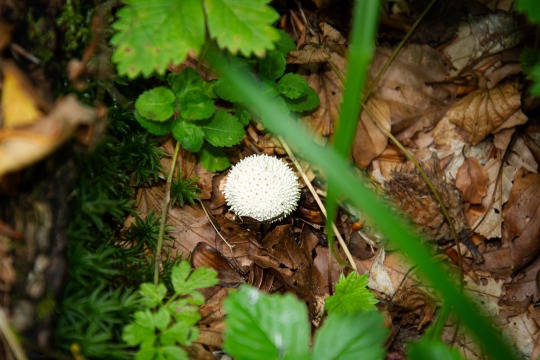

#nature#nature photography#spring#flowers#puffballs#lycoperdon perlatum#romania#oxalis acetosella#macrisul iepurelui#woods#green aesthetic#adventure#unacunatura#photographers on tumblr#may walks#white flowers#spring aesthetic#muntii bucegi#mountains#green#leaves#moss#forest trees
23 notes
·
View notes
Photo


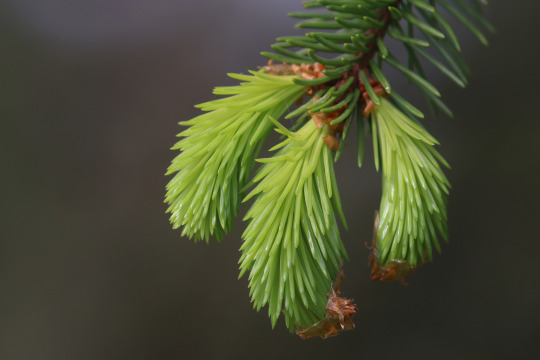


Hovfjället nature reserve in Värmland, Sweden (May 31, 2022).
449 notes
·
View notes
Text

39 notes
·
View notes
Text
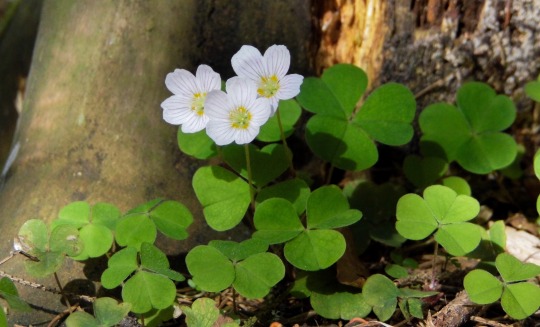
#Oxalis acetosella#wood sorrel#flower photography#white flower#spring flowers#green energy#green leaves#beautiful#beautiful photos#my photo#photography#photooftheday#naturecore#photoart#forest#woods#forest view#walking in nature#nature#goblincore#goblin aesthetic#goblin community#nature lover#goblin things#nature photography#walkingbarefoot
188 notes
·
View notes
Text
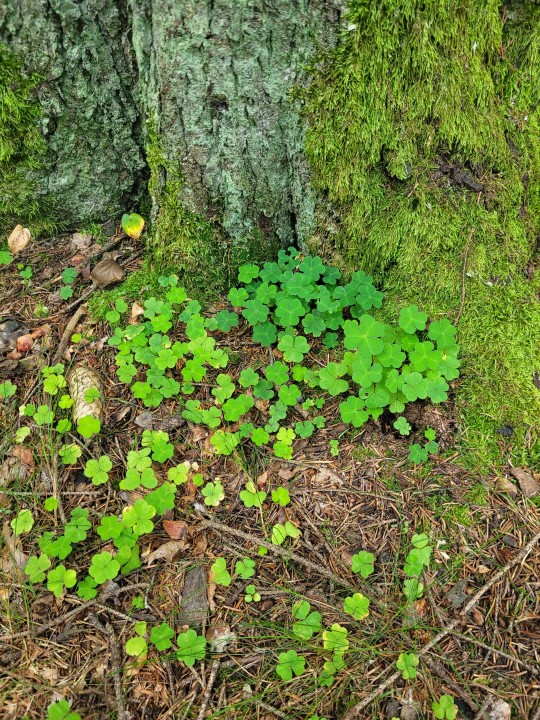
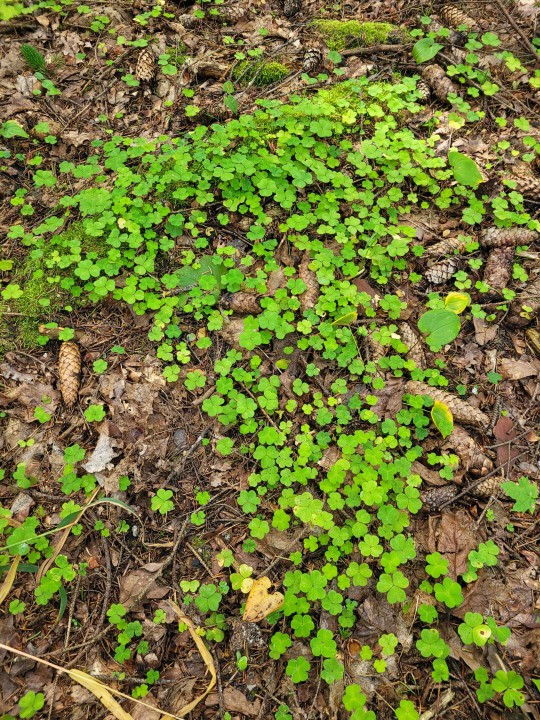
you guys ever had harsyra (oxalis acetosella) before?
it tastes sour kind of like a very sour apple and it's a very common plant in swedish forests
8 notes
·
View notes
Text

#oxalis acetosella#wood sorrel#szczawik zajęczy#nature#forest#spring#white flowers#35mm color film#35mm camera#zenit et#analog
1 note
·
View note
Text
i hate coming up with uses for plants.. what if i just think its cute, is that not enough????
9 notes
·
View notes
Photo

Wood Sorrel Oxalis acetosella
#cottagecore#dirtcore#goblincore#nature#nature photography#biology#ecology#wildlife#wildlife photography#macro photography#plants#sorrel#wood sorrel
194 notes
·
View notes
Text
Poll time!
Southern Italian, Mediterranean dwellers and general public!
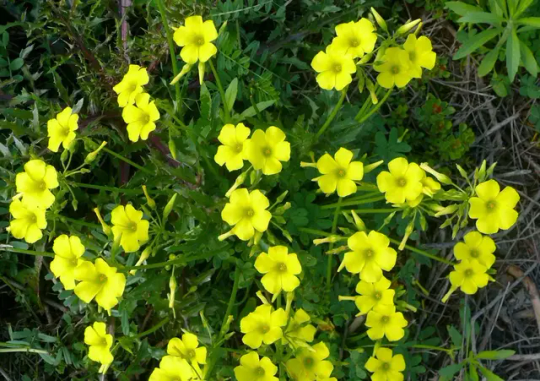
Acetosella gialla (Oxalis pes-caprae)
N.b. when I say eat/suck I mean that you pick the flower as you walk around and suck the juice from the stalk/stem
Historical references under the cut!
Among the many species of weeds along the Mediterranean basin, Oxalis pes-caprae, better known also by the term yellow sorrel, it is one of the most widespread, above all along central-southern Italy, Sicily and Sardinia. It is a weedy botanical species, of South African and Namibian origin (therefore of southern Africa), belonging to the Asteraceae family.In fact we need to remember that, although today it is widespread throughout the Mediterranean, is not a plant native to our regions.
According to some historical sources, its introduction to the Mediterranean took place at the beginning of 1800, on the island of Malta, as an ornamental plant, by a botanical admirer of Anglo-Saxon origins, coming from the South African colonies of the Cape, where today's City of Cape Town is located. This first plant reached Father Giacinto, a local botanist friar, who in fact mentions it in one of his indexes of botanical collections. After being planted in several places on the island of Malta, the plant spread massively within a few years, starting from the Maltese territory and Gozo.
Shortly thereafter, Oxalis pes-caprae began to invade Sicily and Sardinia as well, as an invasive weed species, to the detriment of the local species, which were quickly supplanted by this plant, originally from southern Africa. The characteristics of the species. This plant is very particular, as it has a bulb which is the only part of the plant that remains alive all year round. Its reproduction occurs vegetatively. Each root originates from a central bulb. From this arise numerous small bulbs which, when detached, generate a new plant.
Lacking cross-pollination, all the yellow sorrels around Italy are clones of those few plants that arrived at Padre Giacinto more than two centuries ago.
The bulbils remain dormant throughout the summer and germinate in late autumn, after the arrival of the rains. Flowering takes place in winter, between the end of December and February, continuing until spring when the aerial part disappears, closing the reproductive cycle. Medicinal properties and soil protection.
In the past it was believed that the plant had important medicinal virtues, through the use of its roots and leaves. Even today, in herbal medicine, the leaves and roots of this plant are used in decoctions for their refreshing, diuretic, astringent and anti-scurvy power. The juice of the centrifuged leaves is useful for heartburn and ulcers.
Oxalis pes-caprae still acts as a protection for the soil (even if in the long run it continues to deplete it of nutrients), limiting the erosive damage produced by winter storms on plowed land and reducing erosion or excessive exposure to sunlight and wind, which would further damage the soil.Furthermore, flowering en masse in late winter, it ensures precious nectar for pollinators, in a period in which there are not many blooms.
Translation from:
27 notes
·
View notes
Text

O – Oxalis articulata Savigny – Acetosella rizomatosa (Oxalidaceae)
35 notes
·
View notes
Text
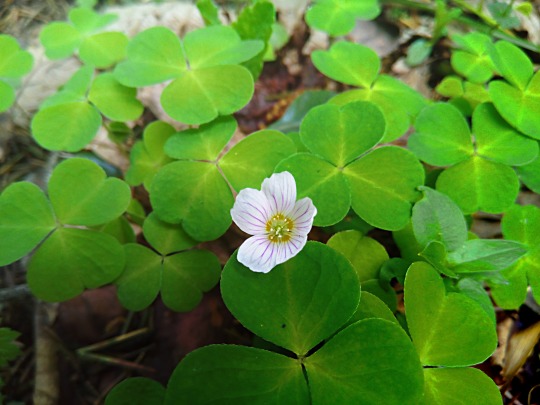

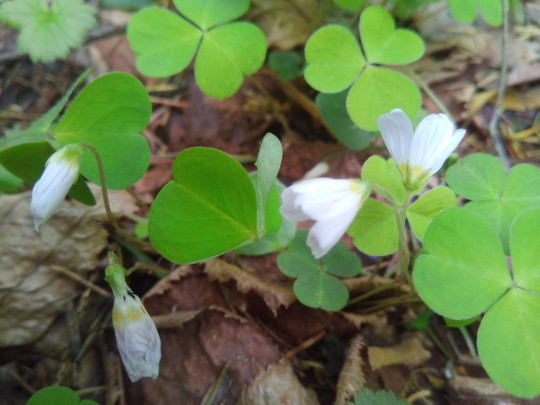
Кислица обыкновенная Oxalis acetosella
Oxalis ordinary
#русский tumblr#россия#весна#природа#кислица#цветы#лесные цветы#весенние цветы#белые цветы#макрофото#загородом#мои фото#russia#nature#nature photography#spring#original photography#flowers#spring flowers#my photos#original photographic works#white flowers#oxalis#forest flowers
24 notes
·
View notes
Photo

Lá Fhéile Pádraig Sona Duit!
(“Happy Saint Patrick’s Day to you” in Gaelic)
Saint Patrick’s Day is a celebration of Irish culture and heritage held annually on March 17th in most English-speaking countries and regions with an Irish diaspora. The shamrock is the symbol of Ireland but what, botanically speaking, is a “shamrock”?
The word comes from the Irish Gaelic word “seamrog” which means “little clover”, but this is simply a common name that can apply to several clover-like plants native to Ireland. All clover species belong to the genus Trifolium, which is a member of the Fabaceae plant family which includes peas and beans. The genus name Trifolium literally means “three leaves” in Latin and clovers almost always bear a leaf composed of three equally sized leaflets. Four leafed clovers can occur in almost all clover species and are thought to be the result of a recessive genetic mutation due to their rarity. The three leaflets symbolise the Holy Trinity in Irish culture, and it is said Saint Patrick used the plant to help explain Christian teaching during his mission to convert the Irish to Christianity.
There is no single species exclusively officially known as a “shamrock”. Several clover species are commonly called shamrocks in Ireland, including the Red Clover (Trifolium pratense), White Clover (Trifolium repens), Purple Clover (Trifolium pratense purpureum), and Lesser Trefoil (Trifolium dubium). An edible wild plant called Wood Sorrel (Oxalis acetosella) is also commonly called a shamrock. Despite the visual similar to clover leaves, the Wood Sorrel belongs to a different plant family and is only distantly related to true clovers.
If you’re putting up shamrock decorations or wearing festive clothes adored with shamrocks today, see if you can decide which species is the true shamrock.
#katia_plantscientist #plants #botany #botanical #botanicalphotography #saintpatricksday #saintpatricksday2023 #ireland #irish #irishculture #nature #clover #woodsorrel #whiteclover #redclover #trefoil #shamrock #plantidentification #plantfacts #leaves #cloverleaf #green #saintpatrick #flowers #plantbiology #trifolium #fabaceae #oxalis #wildflowers #plantscience
#katia plant scientist#plants#botany#botanical#photosynthesis#saint patricks day#Ireland#irish folklore#nature#clover#wood sorrel#white clover#red clover#lesser trefoil#green#wildflower#oxalis#plant biology
7 notes
·
View notes
Text

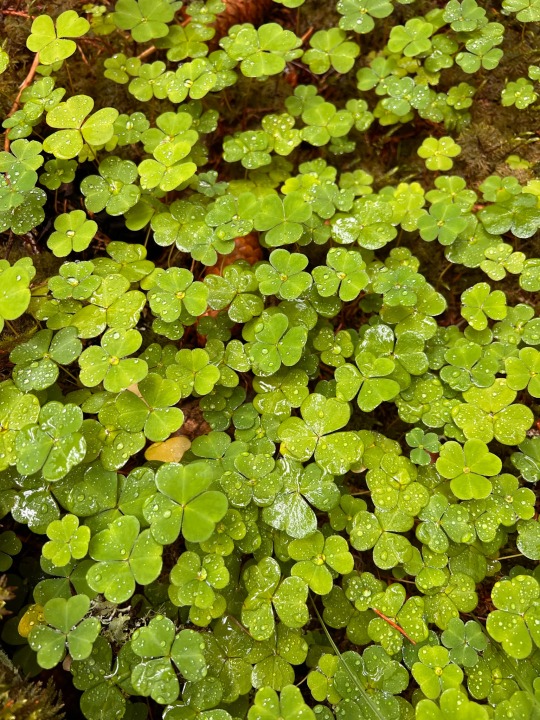
Oxalis acetosella, known for its sour taste and heart-shaped leaflets
#nature#mine#flowers#wood sorrel#common wood sorrel#edible plants#edible flowers#woods#oxalis acetosella#norway#scandinavia#europe#foraging
3 notes
·
View notes
Text

Harsyra (Oxalis acetosella) ❤️
May 2023 🌿
Brunnbäck, Avesta, Dalarna, Sweden
#sweden#swedish#my photos#spring flowers#flowers#plants and herbs#herbsandflowers#springtime#swedish spring#my post#my photgraphy#gay#gaylife#nature#forest#forest flowers#natural history#loveofnature#F#spring#springweather#dalarna#enjoythelittlethings#herbs#my hobbies
4 notes
·
View notes
Text
Karelian words - Vegetables
Kazvokset, ouvešit - vegetables
Bŕukvu, kaĺuha - swede
Dorogalehti - broadleaf plantain (Plantago major)
Gurbičču - pumpkin, Cucurbita, esp. pepo pepo
Herneh - pea
Horma - willowherb (Chamaenerion angustifolium)
Jänöinleiby - wood sorrel (Oxalis acetosella)
Kapusta - gabbage
Kartohku, potakka - potato
Keldujuurikoi, morkohku - carrot
Kezägurbičču - courgette
Kožlanheiny - ground elder (Aegopodium podagraria)
Kukkukapusta - cauliflower
Kukuruuzu - corn
Laukka - onion
Myskigurbičču - butternut squash
Nagris - turnip
Ogurču - cucumber
Osmankeäbä - Broadleaf cattail (Typha latifolia)
Pabu - bean
Pomidor, tomuattu - tomato
Poreilaukka - leek
Redissu - radish (Raphanus sativus minor)
Ruškeijuurikoi, sv'oklu - beetroot
Rötky - radish (Raphanus sativus major)
Sarvińägälä - iceland moss (Cetraria islandica)
Sparžu - aspargus
Sparžukapusta - broccoli
Šiiloi - nettle
Špinuattu - spinach
Voikukku - daffodil
10 notes
·
View notes
Note
Jag talar 3 språk och jag lär mig tyskan i skolan och svenska med Duolingo :D
also you probably didn't notice the ask where I sent the names of the flowers I ate
-crystal tit
Yoooo that’s so cool. I’m learning Ukrainian by duolingo but I’m nowhere near advanced enough to actually confidently write a single sentence lmao
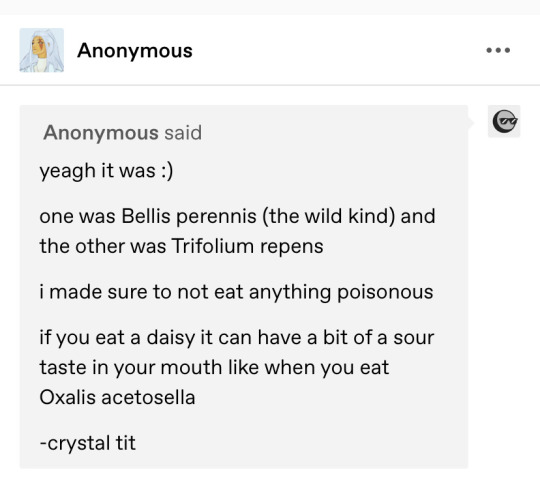
I’d be concerned about you eating flowers but seeing as I know ppl who eat mercury and cleaning soda, I’m going to trust your judgement on eating daisies
Fun fact oxalis acetosella in Swedish is called “rabbit acid”
6 notes
·
View notes